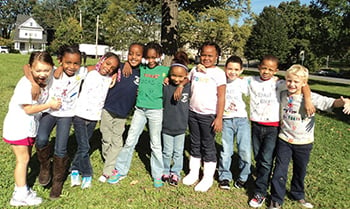Guest post by Juliette Price, director of The Albany Promise, a StriveTogether Cradle to Career Network partnership.
Communities and individuals, from California to New York, are working every day to change adult behavior to improve the outcomes for our nation’s most vulnerable students.
But this work can be lonely. At this year’s StriveTogether Expert Convening, five cities from across the nation — Albany, Minneapolis, Tacoma, Marin and Cincinnati — got together to share their triumphs and tribulations, tips and lessons learned and collectively move our field forward focused on their efforts at targeting strategies to close the achievement gaps in their communities.

Each community brought a singular case study from their partnership’s work in order to take a deep dive into why a particular strategy worked and identify the key elements to delivering on the promise of improvement. Every case study was radically different — some communities focused on high school graduation rates, others on summer learning loss — but common themes quickly emerged as key to ensuring targeted strategies led to improvement.
- Clearly define the problem: The outcomes partnerships want to move are complex. For example, successful college enrollment is the confluence of many events. By just focusing on summer melt — the last three months before college enrollment — you can start to make noticeable gains toward your goals quickly.
- Scope small: With very large geographic areas such as Minneapolis-St. Paul, Minn., sticker shock can set in when you see that there are 29,000 high school students in the partnership’s footprint. By selecting four high schools to begin working with, the partnership focused on just 5 percent of the student population, enabling them to start testing immediately.
- Design with the end user in mind: The partnership in Marin County, Calif., is focused on raising federal college student aid application completion rates and opted to build the intervention directly into the school day, enabling them to reach students where they already are instead of adding a new layer of service.
- Build buy-in into the process, don’t seek it: It was clear that we all struggled with issues surrounding buy-in from partners. Seeking buy-in simply doesn’t work. Co-creation does, and including the right partners at the right level of buy-in is key.
- Bet small, then go big: With over 70 million students in the U.S. today, scale is the name of the game. But innovation causes disruption, and unknowns are easier handled when a new process is piloted with a small number of students. Every time a new process is executed, we learn more about the situation and use continuous improvement to augment impact as we scale.
We may be scattered across the country, but our collective expertise in improving outcomes for kids is continuously reinforced when we share our lessons learned, from sea to shining sea.
Learn more about targeted strategies and what you can do to bring attention to and eliminate disparities at the StriveTogether National Convening in Memphis, Tennessee September 20-22, “Rise Up: Education Excellence for Every Child.”
 Juliette Price serves as director for The Albany Promise cradle-to-career partnership in Albany, N.Y. She previously worked in higher education, teacher education and statewide education policy, focusing on using evidence-based interventions to improve the lives of students and families across the state of New York.
Juliette Price serves as director for The Albany Promise cradle-to-career partnership in Albany, N.Y. She previously worked in higher education, teacher education and statewide education policy, focusing on using evidence-based interventions to improve the lives of students and families across the state of New York.




